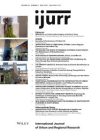The industrial ‘Event City’, host to World Fair, sporting, cultural and ceremonial mega‐event, has been transformed in its late‐capitalist form into the ‘City as Event’– from the all year round festival city to the ubiquitous ‘Cities of Culture’. These self‐styled culture cities now look to the contemporary art museum and cultural district to provide a cosmopolitan edge to their promotional icons and associations, with Art now acknowledged as an ‘industry’. Cities worldwide, irrespective of their indigenous culture and heritage (e.g. Guggenheim Bilbao, Rio et al.), are thus emulating the brand reinforcement witnessed in leisure and entertainment products and themed experiences, which themselves have entered the retail environment as prime urban consumption spaces. The paper critiques this evolution of the city of culture and the branded art facility in terms of their form and function, arguing that form has followed regional funding, and that culture‐led regeneration and place‐making now mirrors the product branding of Nike and Sony, vying with them for consumer and political attention through the use of star architecture and retail strategies that belie their public good/realm and cultural distinctions. The cost of these flagships and cultural strategies, the paper concludes, is borne in terms of cultural diversity and production versus consumption and mediation; in community cultural activity and amenity; and by those who do not have a stake in the gentrification process which attaches to these globalized grands projets
Details
Written by:
Graeme Evans
Digital Object Identifier (DOI)
10.1111/1468-2427.00455
About DOI
Read full article as PDF
Read full article as HTML
See the references for this article
